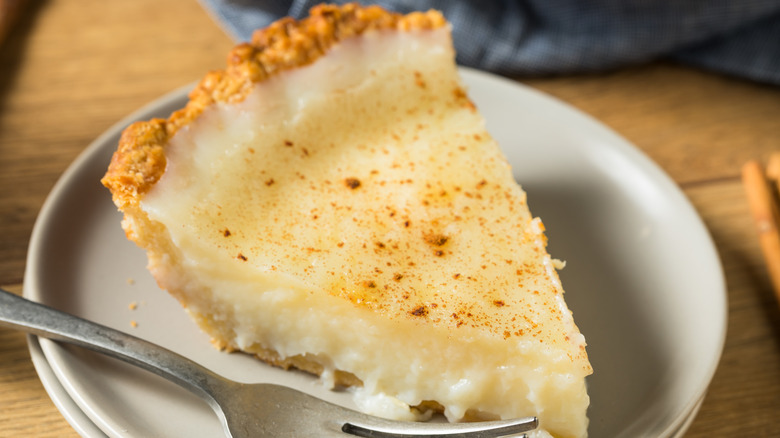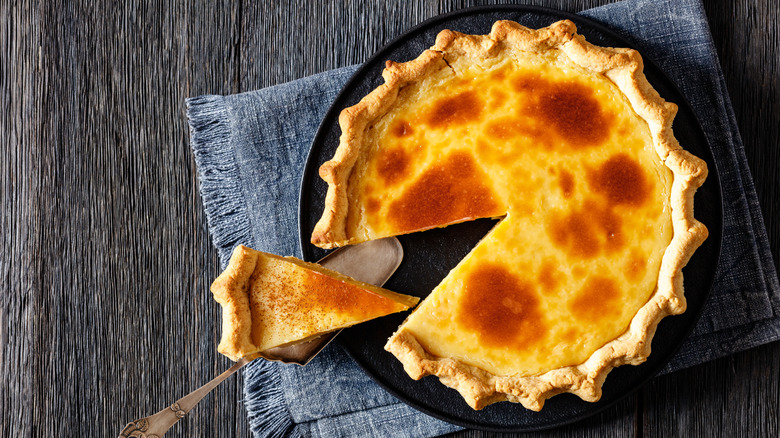The Sweet History Of Indiana's Iconic Sugar Cream Pie
Indiana's sugar cream pie, also known as Hoosier pie, has been a staple dessert in the state for about two centuries. This simple yet delectable treat first appeared in the early 19th century among the Quakers, Shakers, and Amish who lived in the area, all of whom were known for their resourcefulness and simple lifestyle. The pie fit into their tradition of baking with basic available ingredients, like sugar, cream, and flour, which made sugar cream pies a popular and affordable dessert.
The earliest known recorded recipe for sugar cream pie dates to 1816, coinciding with Indiana's achievement of statehood. Its bare-bones ingredients earned it the nickname "desperation pie," which referred to the fact that it could be made when fresh fruit wasn't available. The name and the popularity of the pie later made a resurgence during the Great Depression, when the economy tanked. At their most basic, sugar cream pies call only for sugar, cream, and flour or cornstarch, all of which would have been available to most people.
Despite its humble beginnings, the sugar cream pie has become an iconic symbol of Indiana's heritage. In 2009, the Indiana Senate even attempted to make it the official state pie, though the resolution ultimately failed to become law. Wick's Pies, a Winchester, Indiana-based company founded in 1944, has played a significant role in popularizing the treat. The company produces around 10,000 pies daily equating to approximately 3.6 million annually.
A pie with many variations
While the original sugar cream pie recipe remains a beloved standard, the simplicity of the recipe invites experimentation, and many Hoosiers have developed unique variations – similar to variations on classic apple pie recipes. In the traditional recipe, the crust and filling were likely baked together, for ease of preparation and efficiency. Whether or not to add eggs is a hotly-contested topic, but though most purists say they have no place in a sugar cream pie, some recipes do call for them to increase the custard-like consistency. Some bakers add vanilla, and some might introduce a hint of spice with cinnamon or nutmeg, bringing another type of warmth to the pie's sweetness. Others utilize alternative sweeteners, such as brown sugar or maple syrup, to create a slightly different flavor profile.
Another variation involves cooking the filling on the stovetop before adding it to a pre-baked crust. This method ensures a smooth, velvety texture and prevents a soggy bottom crust. Another twist involves a brief broil of the finished pie, creating a caramelized, crème brûlée-like topping that adds an additional crunch to the creamy filling. Some bakers also incorporate local Indiana ingredients into their pies, such as the American persimmon, which can be added to the filling, offering a unique take that pays homage to the state's old-fashioned persimmon pudding.


